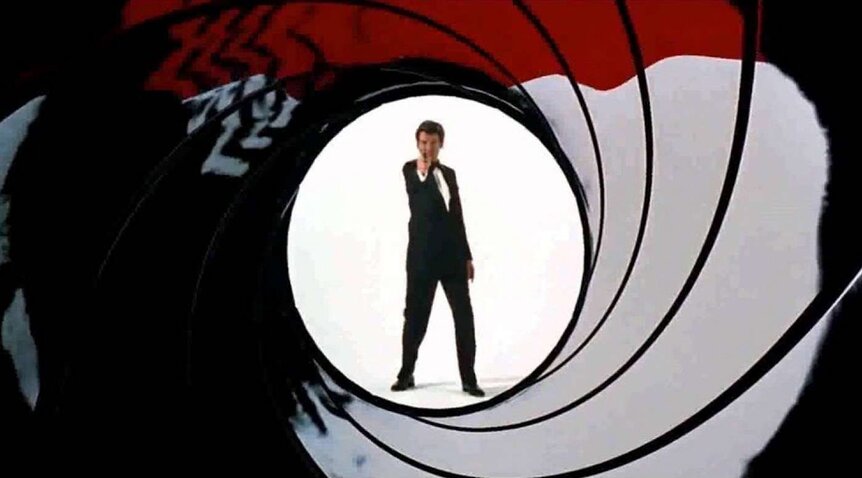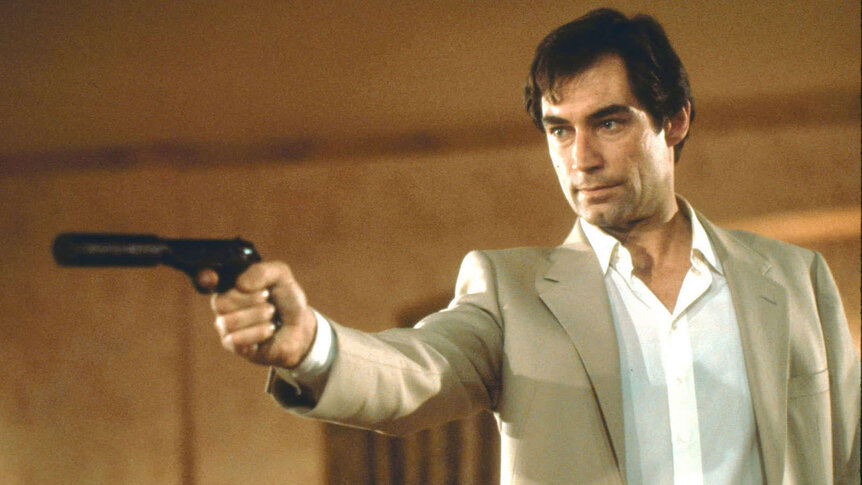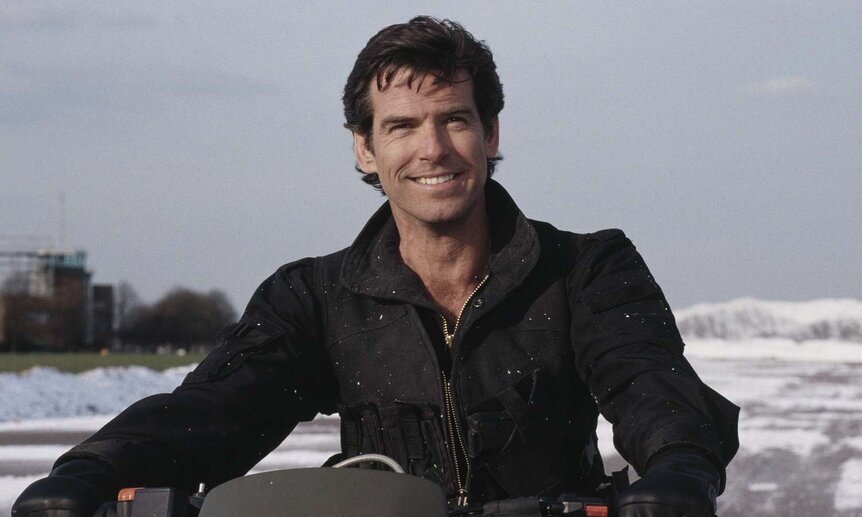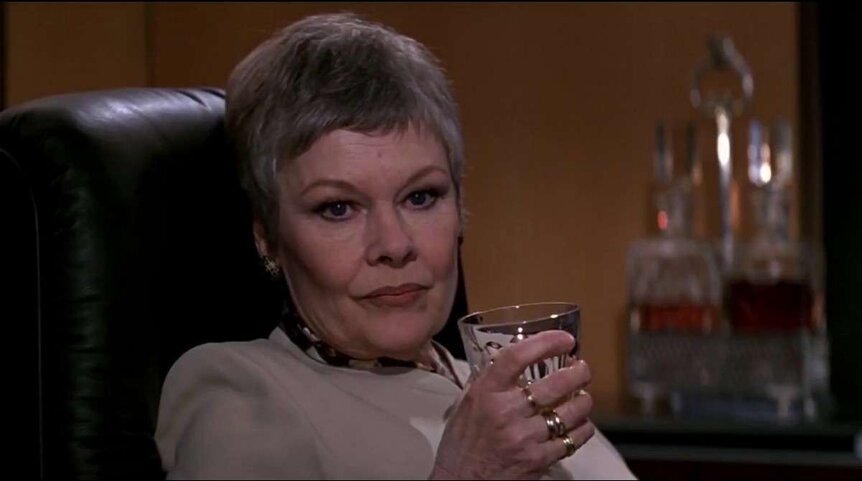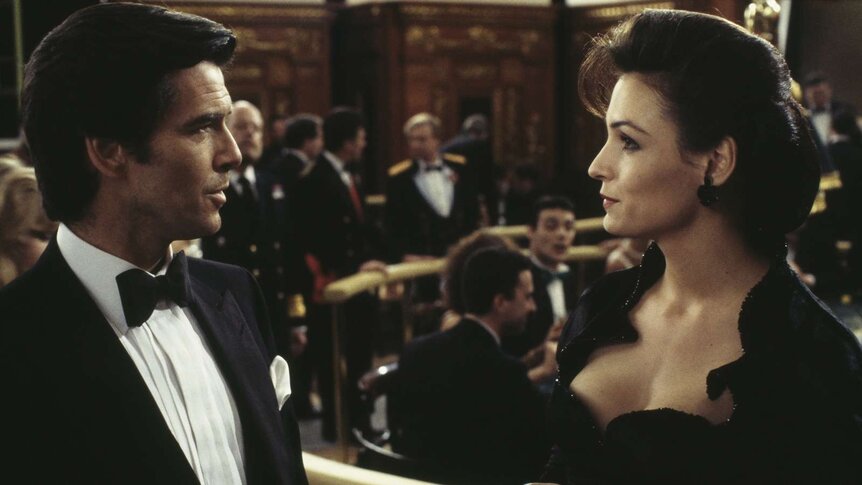Create a free profile to get unlimited access to exclusive videos, sweepstakes, and more!
How GoldenEye saved the James Bond franchise
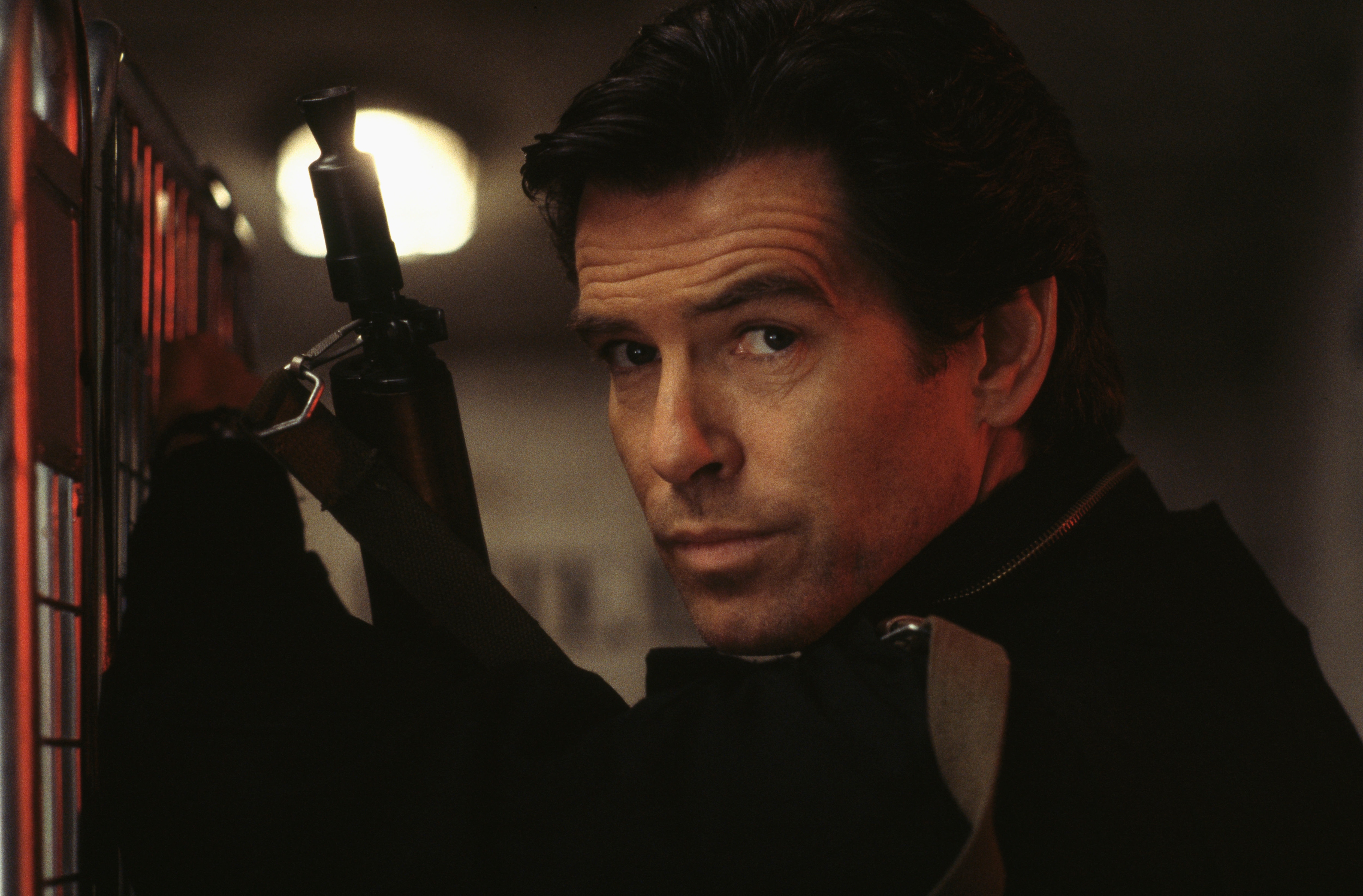
It was 25 years ago that British super-spy James Bond accomplished the most important rescue of his long, legendary career: His own movie franchise.
Nov. 17, 1995, saw the wide release of GoldenEye, the 17th feature based on author Ian Fleming's fictional British agent and the first in six years — the longest stretch to date between Bond films — since 1989’s License to Kill. GoldenEye introduced the fifth actor to play the role in the series, Pierce Brosnan, while updating other elements of the canon for the 1990s and resuscitating the iconic but venerable character's financial clout with moviegoers.
Licence to Kill had been the franchise's lowest-grossing entry in the U.S. (it took in just $34 million) and was criticized for its dark tone and heavy violence. But despite License to Kill’s lackluster box office, Eon Productions (producers of every official Bond film since the series started in 1962 with Dr. No) and the studio behind Bond, MGM, began planning in 1990 for the 17th entry in the series, which would have been the third to feature Timothy Dalton as 007.
THE PROPERTY OF... WHO?
Even in 1990, changes were afoot in the world of James Bond. Eon chief Albert Broccoli parted ways with longtime screenwriter Richard Maibaum, who had worked on all but three of the previous 007 adventures, and director John Glen, who had helmed the five previous entries (still the longest stint by any Bond director). Broccoli was interested in bringing new blood to the series, and some of his candidates for director allegedly included John Landis (An American Werewolf in London) and Ted Kotcheff (First Blood).
Meanwhile, Broccoli's stepson Michael G. Wilson, a producer, executive producer, or co-writer on every Bond film since Moonraker (1979), penned a screenplay (allegedly titled "The Property of a Lady" after a Fleming short story) involving a terrorist attack on a Scottish nuclear facility and Bond's investigation of a wealthy yet corrupt businessman named Sir Henry Lee Ching. The story also featured a jewel thief named Connie Webb, an old mentor of Bond's called Denholm Crisp, and a plot to start World War III.
Other writers worked on the script, including television writer Al Ruggiero (Wiseguy) and the British duo of William Osborne and William Davies. In the 2015 book Some Kind of Hero: The Remarkable Story of the James Bond Films, Osborne told authors Matthew Field and Ajay Chowdhury, "The idea was that Bond was beginning to doubt whether he could still do it."
The script went through further revisions, which yielded plot points that ended up in what later became GoldenEye. Some of those included a pre-credits sequence set at a chemical weapons facility and the theft of a stealth aircraft. But in August 1990, real-life events put a halt to work on Bond 17. Albert Broccoli and Eon Productions (through its parent company, Danjaq) began a protracted legal battle with MGM that would freeze all development of a new Bond film for the next two years.
DALTON BOWS OUT
We won't get into the legal wrangling between the Bond producers and MGM, except to say that, in simplified terms, it had to do with the licensing of the Bond movies by the studio to television networks at prices far below what the producers thought their value was.
The entire mess was sorted out by the summer of 1993, and the studio, now known as MGM/UA (for United Artists), began talks with Eon about relaunching Bond. The go-ahead was given for a new script, this time written by Michael France (Cliffhanger) and later rewritten by Jeffrey Caine and Bruce Feirstein. The story would address 007's role in a post-Cold War world and bring back some of the fun missing from the two Dalton films.
Speaking of which, it was revealed in Some Kind of Hero that MGM/UA made it clear to Eon that it was not interested in making a third Bond film with Dalton after the declining fortunes of the two he had done. Although it was publicly stated at the time that Dalton was resigning of his own accord, then co-chairman of MGM Alan Ladd Jr. said, "I didn't think that [Timothy Dalton] was the appropriate man for it. I thought they could do better." (Dalton told the story differently in 2014.)
With New Zealand director Martin Campbell already secured on the strength of his previous picture, No Escape (1994), the search was on for a new actor to don the tux. Well, not really: Almost from the start, although names like Mel Gibson, Ralph Fiennes, and Liam Neeson had been approached about the part first made iconic by the late, great Sean Connery, the studio and Eon both agreed that their man was Pierce Brosnan.
BROSNAN BEGINS
Pierce Brosnan was supposed to become James Bond some eight years earlier, in 1986, after Roger Moore left the series. Albert Broccoli had been impressed by his work as a debonair detective on the NBC series Remington Steele and thought he'd be the perfect successor to Moore. Brosnan's wife at the time, actress Cassandra Harris (who passed away in 1991) even had a small part in one of Moore's Bond outings, For Your Eyes Only, so it seemed like destiny.
But NBC wouldn't let Brosnan out of his Remington contract at the time, and in fact picked up his option for another season at the last minute, so the role went to Dalton instead. But this time, in 1994, Brosnan was wary at first, telling Some Kind of Hero, "I did not want to dare to hope in case the whole thing crashed down around my ears again. It happened very quickly after that."
It did indeed: Brosnan was officially introduced to the world as the new James Bond in June 1994. The new movie, now titled GoldenEye after Fleming's estate in Jamaica where he wrote all the 007 novels, was set for release in November 1995.
OUT WITH THE OLD
GoldenEye follows Bond as he tracks down who has stolen a deadly satellite weapon that can emit a massive electromagnetic pulse. It turns out that the mastermind is his former friend and one-time agent 006, Alec Trevelyan (Sean Bean), presumed dead for years after their final mission together. Trevelyan plans to decimate England's infrastructure as revenge for his parents, Russian Cossacks betrayed by the British government after World War II and sent back to the Soviet Union, where they were put to death by Stalin.
Although GoldenEye was not based on any existing Fleming material, the story in some ways echoed the plot of the third Bond novel, Moonraker, which also involved a villain who was ostensibly working for the British government but secretly plotting against it (the 1979 film Moonraker discarded almost all of this). The idea of a British Secret Service agent going rogue was also re-introduced in the 2012 film Skyfall, with Javier Bardem as the bad guy.
As promised, GoldenEye made several significant changes to the Bond mythology. The opening credits set the tone by displaying images of Cold War-era statues toppling over amid the usual girls and guns, indicating that this movie was going to explore Bond's mission going forward in a new world with new enemies. At one point in the movie, his boss M even refers to the agent himself as a "relic of the Cold War."
Speaking of which, M — played by Bernard Lee and Robert Brown in the previous 16 films — was portrayed this time by Dame Judi Dench, who would supervise Bond for six more films. According to Andy Lane and Paul Simpson's book The Bond Files, the idea of having M be a woman was suggested as far back as 1985 by Lois Maxwell, the series' original Miss Moneypenny, but it was only put into effect with GoldenEye, reportedly inspired by real-life MI5 head Stella Rimington.
During that same conversation in which M refers to Bond as a "relic," she also says, "You don't like me, Bond. You don't like my methods. You think I'm an accountant, a bean counter more interested in my numbers than your instincts... Good, because I think you're a sexist, misogynist dinosaur."
WHAT MAKES BOND TICK
Pierce Brosnan told Entertainment Weekly during the filming of GoldenEye that he wanted to ”find a chink in (Bond's) armor... peel back the layers, show his dark side.” GoldenEye does take a few stabs at that. It's the first film to reveal that Bond is an orphan, and both Trevelyan and Russian computer programmer Natalya Simonova (Izabella Scorupco) needle Bond about what makes him tick.
Trevelyan pokes his former friend about the "vodka martinis that have silenced the screams of all the men you've killed," while Natalya expresses frustration with his methods: "You think I'm impressed? All of you with your guns, your killing, your death... how can you act like this? How can you be so cold?"
Bond: "It's what keeps me alive."
Natalya: "No. It's what keeps you alone."
Natalya herself is much more of a modern woman than many previous "Bond girls," never appearing once in a skimpy costume and even saving Bond's rear end once or twice during the movie. But GoldenEye doesn't go all PC either: The second female lead, the villainous Xenia Onatopp (X-Men's Famke Janssen), is a savage killer who derives sexual pleasure from crushing men to death between her thighs.
Certain elements, of course, did carry over from the previous Bond films, such as the opening gun barrel sequence, the requisite theme song, the emphasis on astonishing stunt work, and even the return of Desmond Llewelyn as gadget master Q. As for Brosnan himself, his performance falls somewhere between the toughness of Sean Connery and the suave good humor of Roger Moore — a balance that audiences responded to.
BOND IS BACK
GoldenEye was the first Bond film not produced by Albert R. Broccoli, who was forced by failing health to turn the franchise over to Michael G. Wilson and his daughter Barbara, who control it to this day. But Broccoli did get to see the finished film and enjoy the return of the series he had shepherded from day one before his death in June 1996.
GoldenEye was an unqualified success: It grossed $106 million in North America and $356 million worldwide, making it the highest-earning 007 thriller since Moonraker (not adjusted for inflation) and setting the series back on track for the next quarter of a century. Nearly every Bond film that followed, including Brosnan's next three and the four so far starring his successor, Daniel Craig, has matched or outgrossed the one before it (the one exception, 2015's Spectre, which earned $879 million but did not hit the billion-dollar heights of 2012's Skyfall). It was no coincidence that when it came time to reinvent Bond again for 2006's Casino Royale, GoldenEye director Martin Campbell was the person that Eon called.
But its financial success aside, GoldenEye was the movie that re-introduced Bond to the world after it was suggested by the end of the 1980s that his career was over. To borrow a phrase, the 1990s was no time to die for Bond, and GoldenEye ensured that he wouldn't.
